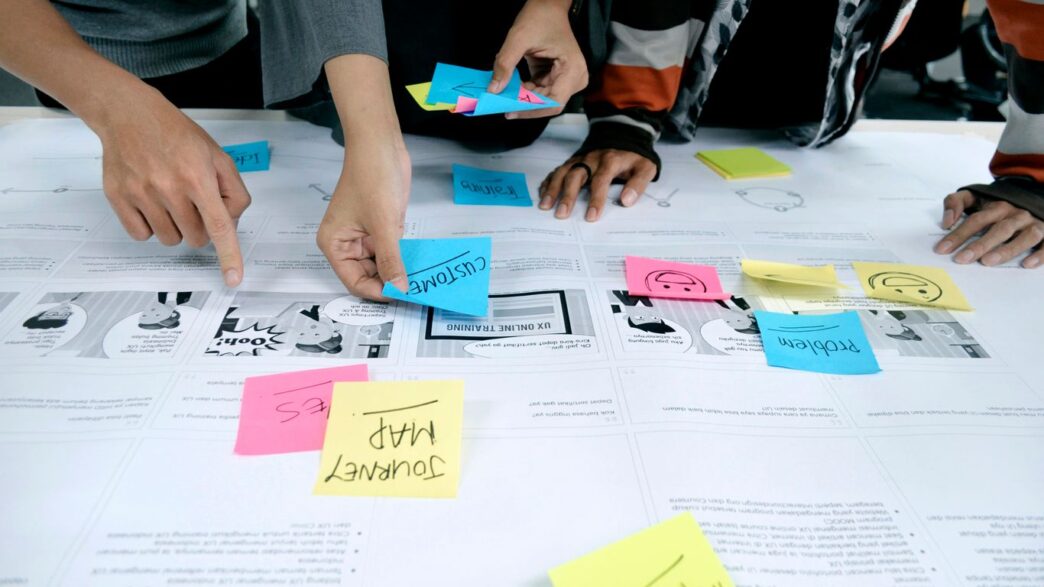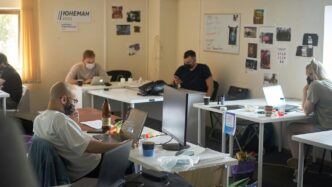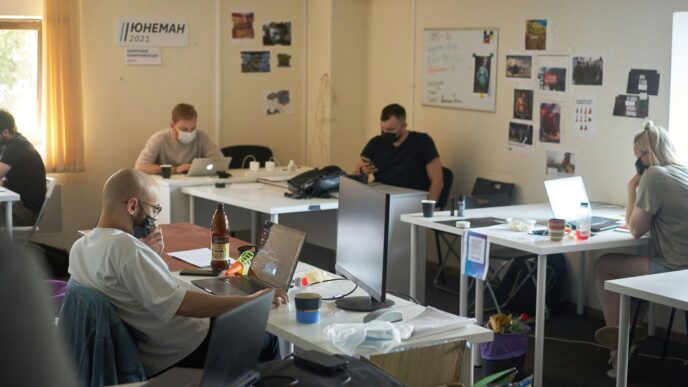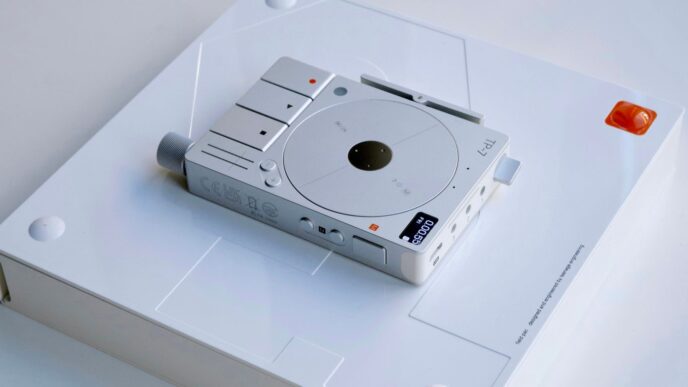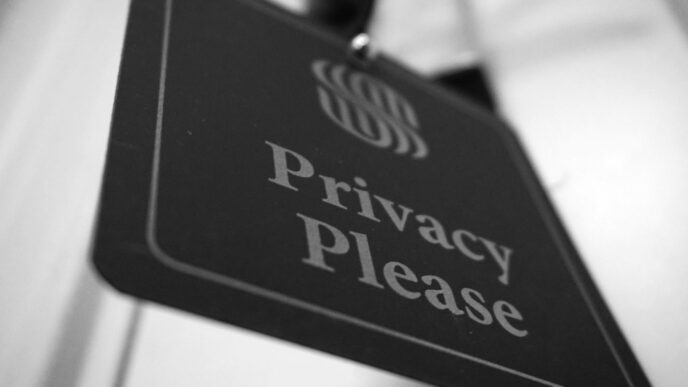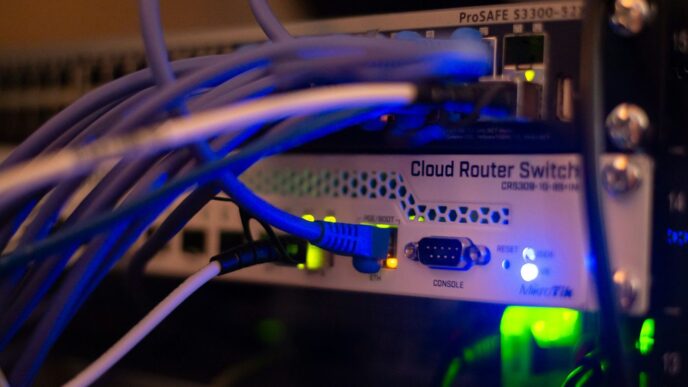The digital PR space is moving fast, and 2025 has already brought some surprising campaigns. Brands are getting creative to stand out, and it’s not just about press releases anymore. This year, we’ve seen everything from music apps turning personal data into shareable moments to big brands jumping into social causes. If you want to know which ideas actually grabbed headlines and why, this list of the best digital PR campaigns of 2025 is a good place to start.
Key Takeaways
- Personal stories and data-driven content help campaigns go viral and get people talking.
- Working with celebrities or influencers can boost visibility, especially when it’s tied to a real cause.
- Clear messaging and a focus on current events or trends make campaigns more likely to be picked up by the media.
- Authentic, purpose-driven campaigns resonate more with audiences than stunts that feel forced.
- Digital PR is about more than just coverage—it’s about building long-term trust and real connections with audiences.
Spotify Wrapped

Every December, people wait for something small but fun: their Spotify Wrapped. It’s simple—Spotify takes everyone’s listening data from the whole year and turns it into a bright, highly shareable recap of top songs, favorite artists, most-played genres, and even total minutes spent listening. The real magic though? Folks love showing off their Wrapped stats. Suddenly, everyone’s social feeds are filled with these colorful cards, making personal data feel like a badge of honor. There’s instant conversation—"You listened to Taylor Swift for how many hours?"—and it never fails to get people talking about music.
There are a few reasons this digital PR move has continued to make headlines:
- Personalization: Everybody gets their own version, so it feels special and tailored.
- Built-in virality: Sharing is just a tap away—Instagram Stories, Twitter, TikTok, you name it.
- Earned media: News outlets cover the launch, celebs tweet their lists, and internet debates kick up ("Are you really surprised by your top genre?").
Spotify Wrapped not only strengthens user loyalty, but it also hands out loads of free marketing. According to this Spotify marketing breakdown, Wrapped is part of a bigger plan that keeps the brand front of mind.
| Year | Estimated Shares (Millions) | Top Hashtag Used |
|---|---|---|
| 2022 | 60 | #SpotifyWrapped |
| 2023 | 80 | #SpotifyWrapped |
| 2024 | 90 | #SpotifyWrapped |
If there’s one takeaway from Spotify Wrapped, it’s that letting people share something about themselves, especially in a quick and flashy way, can be the most effective PR move of all.
What started as a simple personal annual review is now a cultural ritual that no competitor has managed to copy at scale. The numbers back it up, but so does the sheer noise it generates each winter online.
Grammys Give Back: Amplifying Local Businesses After LA Wildfires
The 2025 Grammy Awards didn’t just hand out trophies—they also became a lifeline for Los Angeles businesses hit hard by the wildfires earlier that year. Instead of the usual star-studded commercials, the Grammy telecast featured short, heartfelt ads where top artists spotlighted struggling local companies. Viewers saw Grammy nominees like Doja Cat, the Jonas Brothers, Charlie Puth, and Avril Lavigne championing unique LA businesses—a flower shop, a family-run martial arts school, a skate store, and a nonprofit that reunites children with their lost stuffed animals.
This was more than just exposure. The campaign let viewers scan on-screen QR codes for direct giving, raising over $7 million for recovery funds by the end of the night thanks to efforts like funds raised during the 2025 GRAMMYs telecast.
Here’s why this campaign worked:
- Relied on artists’ influence to put real faces and stories behind small businesses.
- Brought the stories to millions on live TV and social channels, not just industry insiders.
- Connected donations to specific businesses, making every dollar feel personal.
| Outcome | Amount |
|---|---|
| Total Donations | $7,000,000+ |
| Local Businesses Featured | 4+ |
| Celebrity Endorsements | 5+ |
When TV time, star power, and a community in need collide, the results can be huge—and actually help people get back on their feet. Nothing felt forced or corporate; it showed how the Grammys could use their influence for more than music glory.
AI Fatigue
Lately, everyone seems to be talking about how artificial intelligence changed the way we work—until folks started getting tired of it. AI fatigue blew up as a trend in 2025, with workers and even PR teams admitting to feeling overwhelmed by endless new tools and automation. The novelty of AI wore off, replaced by questions about privacy, stress, and the trustworthiness of what we see online. Companies noticed their teams spending more time learning new programs than actually getting things done.
Here’s what made the AI fatigue campaign so different:
- Honest surveys with employees about their actual experiences using AI—no sugarcoating.
- Data showing real-world challenges and barriers felt much more relatable than yet another success story.
- PR teams focused on listening, supporting mental health, and making guidance easy to find instead of just hyping the latest update.
A few numbers that caught my eye:
| Survey Result | Percentage |
|---|---|
| Workers feeling ‘overwhelmed’ by AI | 62% |
| Prefer fewer AI tools | 55% |
| Want more training/support | 70% |
The lesson? People want tech that solves problems, not just headlines about the future. Making AI helpful (and less exhausting) might actually get folks more excited to use it again.
Not every industry grabbed for space adventure headlines like Virgin Galactic’s spaceship rollout—sometimes, helping workers just breathe easy is a smarter PR move.
Gen Z Mental Health 2.0
Gen Z has faced more open talks about mental health than any group before them, but 2025 saw brands taking the conversation a step further. Instead of vague awareness posts, there’s a push for tools, spaces, and tech that actually help young adults manage stress, anxiety, and burnout. Campaigns are ditching the polished, corporate tone for real-life stories, meme threads, and community-driven projects.
A few things set the best Gen Z mental health campaigns apart this year:
- Direct feedback loops: Brands used interactive digital tools, like Smartzer’s clickable video tech (retailer engagement tool), to see what advice and resources Gen Z actually wanted—not just what companies hoped to push.
- Radical honesty: Campaigns admitted when they didn’t have all the answers and invited the audience to help brainstorm.
- Prioritizing accessibility: Mental health resources were dropped right into social feeds, DMs, and live chats—not hidden in webpages or apps Gen Z would never download.
Here’s a quick look at some measurable results reported in leading 2025 campaigns:
| Campaign | Inbound Media Placements | Average Engagement Rate |
|---|---|---|
| RealTalk Minds | 142 | 63% |
| MessageBack | 94 | 52% |
| SmartPath | 110 | 58% |
It’s impossible to ignore how much more vocal and skeptical Gen Z is about wellness talk. The best PR work happened where real conversations, memes, and support systems met—and marketing stopped trying to be perfect.
Buy Now, Pay Later

The rise of "Buy Now, Pay Later" (BNPL) payment options turned heads in 2025, and it wasn’t just retailers who paid attention. These flexible payment services drove fresh ideas in digital PR, fueling campaigns that not only shaped shopping routines but sparked national talk about personal finance. What started as a post-pandemic solution quickly built up steam—and so did the PR campaigns behind it.
Here’s how BNPL found its way into the spotlight with digital PR:
- PR teams teamed up with market analysts to unpack how shoppers used BNPL, which revealed big generational splits in payment preferences.
- Infographics and data stories about shifting online shopping habits made their way into major outlets, boosting visibility for brands tied to the trend.
- Interactive surveys and press releases hit all the hot spots, pitching stories to journalists already covering consumer finance, tech innovation, and pandemic-driven habits.
Let’s take a look at a quick breakdown of earned media placements from one digital PR BNPL campaign:
| Outlet Type | Number of Placements |
|---|---|
| National Media | 60 |
| Local News | 45 |
| Finance Magazines | 25 |
| Lifestyle Blogs | 40 |
Sometimes, the best content is the one that captures how daily life is really changing. People were already talking about their wallets, but these BNPL campaigns gave them real stories and numbers to share.
BNPL digital PR was about more than pushing a trend—it was about fostering trust. Teams focusing on data-backed angles helped their clients become thought leaders, and mainstream attention followed. As new BNPL options kept popping up, coverage kept rolling in, proving that understanding what shoppers need can lead to viral, headline-making PR campaigns. You can also keep up with other tech-driven shifts through coverage on technology news and digital marketing.
Children’s Mental Health During Pandemic
During the early pandemic, children faced sudden changes in their daily lives—no more classrooms, less time with friends, and a whole lot of uncertainty. The mental toll on kids quickly became a growing concern for families, educators, and health workers alike. What stood out in the digital PR space was one campaign launched by a major children’s hospital, who managed to shine a spotlight on youth mental health even when most of the news was all about the virus.
The campaign worked because it put real numbers and stories together, making the invisible issues visible. It wasn’t just a general discussion; it used research, personal accounts from both parents and kids, and expert insights to give a clear view on what kids were actually going through. There’s something powerful about hard stats paired with honest voices.
Here’s a snapshot of the focus areas the campaign covered:
- Increased anxiety and depression among kids because of isolation and online classes
- Tips for parents to recognize changes in their child’s mood or behavior
- Resources connecting families with therapists and counselors
An example of the kind of clear, simple data included:
| Issue | Pre-Pandemic (%) | During Pandemic (%) |
|---|---|---|
| Kids reporting anxiety | 14 | 36 |
| Kids feeling isolated | 11 | 41 |
| Accessing professional help | 9 | 27 |
Even after things started to open up, the lessons learned were huge; mental health needs to be a daily conversation, not just a side note in schools or at home.
A big part of the campaign’s reach was its connection to everyday parenting issues, making it useful as well as newsworthy. And like with other successful digital PR work, it boosted traffic and awareness by showing how timely, community-focused campaigns can still cut through online clutter—especially with solid strategies around driving website traffic in uncertain times.
Package Theft 2020
In 2020, package theft hit a nerve with tons of people. With everyone shopping online more than ever before, thanks to the pandemic, the idea of having a box stolen right off your porch was suddenly way too real for millions. Brands saw a shot at making a real impression, and that’s how the Package Theft 2020 campaign really took off.
The goal was simple: shine a light on how often porch piracy happens, use real data, and get people talking. The teams behind this didn’t just push out warnings—they made the topic personal with surveys, maps, and bold stats. Press coverage exploded, and big names like the New York Times and Bloomberg picked up their results, making it a talking point at family dinners and neighborhood meetings.
Here’s how they structured their core campaign:
- Gathered fresh, year-over-year data on consumer package theft experiences.
- Used that data to spot new problems from increased home deliveries during lockdowns.
- Created sharable lists and interactive maps highlighting hotspots for theft by state.
| Year | Outlets Covering | Average Domain Authority (DA) | Links Earned |
|---|---|---|---|
| 2019 | 200+ | 69 | 390+ |
| 2020 | 230+ | 65 | 230+ |
These numbers show that the interest in package theft is constant—but 2020 saw a specific jump in urgency around the topic. What’s wild is that a simple survey with a hook managed to cut through
all the digital noise.
People noticed porch piracy a lot more in 2020 because their front doors had never been busier. Everyone had packages coming and going—so when something went missing, it felt a little more personal, a little more maddening.
The campaign also set the stage for later projects, inspiring other consumer research studies in finance, health, and retail. If you want to see how digital PR can spark interest and boost a brand, TechBullion’s coverage of innovative PR campaigns gives more background on how these stories grabbed attention, especially when it mattered most see TechBullion’s overview.
Tiny Homes
Tiny homes were everywhere in 2025, and honestly, it’s no surprise. People were looking for affordable ways to live better, simplify, and maybe even work from somewhere new. Companies noticed this shift and quickly made tiny homes the focus of some of the most talked-about digital PR campaigns of the year. What started as a niche lifestyle became a mainstream conversation—think national coverage from magazines, newsrooms, and loads of blogs.
Here’s what made these campaigns click:
- They tapped into pandemic-era trends: folks needed flexibility for remote work and vacationing closer to home.
- Financial angles got lots of love, especially when the economy was up in the air for so many people.
- Offerings felt both fun and practical, giving people ideas for their own small-space adventures.
And, just to put some numbers on it:
| Metric | Value |
|---|---|
| Total backlinks earned | 130+ |
| Major media coverage (outlets) | TIME, CNN, Vanity Fair |
| Specialized coverage | Realtor Magazine, Housing Wire |
Living small was more than a money move—it was about creative freedom and unlocking new ways of living, which truly caught the public’s eye this year.
Marketers tying finance, home trends, and lifestyle content together made it so stories about tiny houses weren’t just about square footage. They were about new opportunities and, for some, even a better work-life balance. Want a look at how digital strategies can make financial topics viral? Real stories from TechBullion reveal just how powerful creative PR campaigns can be.
The Dress Debate by Tumblr & Buzzfeed
Back in 2015, a random Tumblr post with a photo of a dress launched what might be the most unforgettable online argument of the decade. Suddenly everyone was asking: is it blue and black, or white and gold? Millions got sucked into the debate, and Buzzfeed made it explode even further.
Here’s how it went from a casual post to a massive digital PR moment:
- Buzzfeed quickly picked up the viral post and published an article that invited everyone to vote on the dress’s color
- Major news sites worldwide started referencing the debate
- Social media feeds were flooded with polls, memes, and heated back-and-forths (families and friends argued in person, too)
A quick look at the numbers:
| Metric | Result |
|---|---|
| Buzzfeed Article Views | 28 million+ in 24 hours |
| Tumblr Notes | 500,000+ |
| #TheDress Hashtag Use | 3.4 million+ tweets |
This whole thing wasn’t planned—it just happened. But it turned into a perfect case study for digital PR. The secret sauce was how platforms pounced on something so unpredictable. Being able to respond to real-time social media moments brings massive payoff when you nail the execution.
Sometimes, the biggest traffic spikes don’t come from elaborate marketing plans, but from jumping into the conversations people care about right now. Being quick, relatable, and a little bit playful can be unbeatable.
Fearless Girl Statue by State Street Global Advisors
The "Fearless Girl" statue wasn’t your average corporate move. In 2017, State Street Global Advisors placed a bronze girl—hands on hips—right across from Wall Street’s famous Charging Bull. The message? Girls can stand their ground in the face of big money and power. That image went viral almost overnight, catching fire on social media and landing in newspapers all over the world.
This campaign did way more than just spark conversation. It set a new standard for using public art and messaging to start real debates about gender and leadership. The digital PR results were off the charts:
- Trending hashtags like #FearlessGirl kept popping up on Twitter, Instagram, and LinkedIn.
- Thousands of backlinks helped boost relevant online content and State Street’s own reach.
- Major news outlets and countless opinion columns weighed in on its meaning and impact.
Here’s a quick look at its broader influence:
| Metric | Estimate |
|---|---|
| Media Mentions | 10,000+ |
| Social Shares | Millions |
| Global Backlinks | 30,000+ |
| Duration Trending | 2+ months |
- It didn’t just make headlines—the statue got lawmakers and businesses talking about adding women to their own boards.
- Inspired loads of similar campaigns and art installations worldwide.
- State Street showed that brands can push for social change without losing sight of business goals.
You can bet that making a statement with public art and strong digital PR is here to stay, just like the statue itself. Anyone thinking about their next campaign can take a cue from technology and business leaders who value innovation and bold moves—the results truly speak for themselves.
Conclusion
So, looking back at the best digital PR campaigns of 2025, it’s pretty clear that there’s no single formula for success. Some brands went big with bold ideas, others kept it simple but genuine, and a few just happened to catch the right trend at the right time. What really stands out is how much creativity and a real sense of purpose matter. People can spot a fake from a mile away, so the campaigns that felt honest and had something meaningful to say were the ones that got noticed. Data-driven stories, quick reactions to news, and even a bit of controversy all played their part too. As the year goes on, it’ll be interesting to see what new tricks and tactics pop up. One thing’s for sure: digital PR isn’t slowing down, and if you want to make headlines, you’ve got to keep experimenting and stay true to your brand’s story.
Frequently Asked Questions
What is a digital PR campaign?
A digital PR campaign is a way for brands or organizations to get attention online. It uses things like social media, news stories, and fun content to help people notice a brand, talk about it, and even link to its website. The goal is to get more people to know about the brand and trust it.
Why are creative ideas important in digital PR?
Creative ideas help digital PR campaigns stand out. There are so many brands trying to get noticed, so doing something different or interesting makes people pay attention. Creative campaigns are more likely to be shared and talked about online.
How do digital PR campaigns help with search engines?
Digital PR campaigns can earn links from other websites. When trusted websites link to your brand, search engines like Google see your site as more important. This can help your website show up higher in search results.
What makes a digital PR campaign successful?
A successful digital PR campaign usually has a strong story, is easy to share, and connects with people’s feelings or interests. It should also be real and honest, because people can tell when something is fake. Good campaigns often use data or research to back up their ideas.
How has digital PR changed in recent years?
Digital PR has changed a lot. It’s not just about sending out press releases anymore. Now, it’s about using new tools, working with influencers, and making content that people want to share online. Brands also try to join big conversations or trends to get noticed.
Can digital PR be used for good causes?
Yes! Many digital PR campaigns support important causes, like mental health, helping local businesses, or raising money for charity. When brands support good causes, it can help people trust them more and make a real difference in the world.


